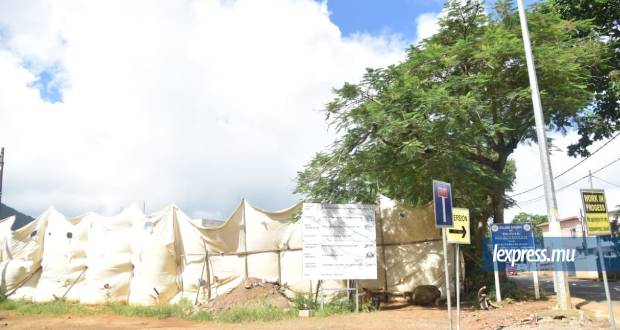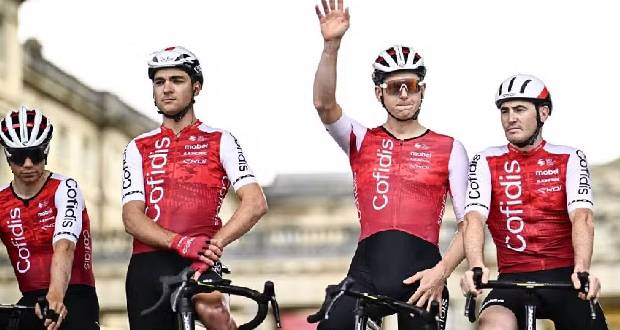Publicité
Lift off or… trouble!
Par
Partager cet article
Lift off or… trouble!

Mauritius needs to reinvent its economic model to avoid falling into the middle income trap.
The budget speech was delivered on the 8th June last. Like its predecessors, it will be best judged on its outcomes rather than on its promises. Since it has been analysed and commented upon exhaustively, it may be best to let it lie for now. Suffice it to say that the social aspects of this budget looked quite meaningful and that delivering the GDP growth figure expected in 2017/18 (4.1%) will be absolutely key, given the fact that any negative swing with respect thereto will play havoc with some of the key metrics that are the budget deficit (estimated at 3.2%, down from 3.5% in 2016/17) and the Public Sector Gross Debt as a percentage of GDP – which was targeted to fall from the current 66.1% to 63.0% in 12 months’ time. *

These figures are especially challenging because the budget did not include any provision to finally dry-out the SCBG/BAM swamp – where just too many gutless promises were made from the off, contrary to SAJ’s better instincts, in this one case – or to pay up the Singapore Court of International Arbitration ruling against government and in favour of Betamax for close to Rs 5 Bn. It may also be worrying for the future that the expected budget deficit of 3.2% crucially depends upon grants for Rs 6.9Bn (1.4% of GDP) and the closure of two special funds for Rs 5.7 Bn (1.2% of GDP). The itemization of a fresh USD loan of 500M in our sovereign debt rather than “off balance sheet” as had been the original (and rather surprising!) intention will not help, but since it walks like a duck and quacks like a duck, it is most likely to be a duck – at least when looked at through the lenses of the IMF/WB inspectorate!
An interesting initiative in the wake of this year’s budgetary exercise is the production of a three-year strategic plan to 2019/2020 which, against the backdrop of the Vision 2030 ambitions, attempts to sketch the main challenges being faced and the key policies and targets the country needs to hit, in order to crystallise its dream of becoming a “high-income country” by 2023 (Fig 2-17). This ambition crucially rests upon all government’s plans being met sector by sector, such that the planned growth rate of 4.1% for 2017/18 is actually followed by rates of 4.5% between 2018 and 2020 and 4.75% thereafter! A very tall order indeed! Especially since at least four more factors must also not slip sideways in the years ahead: (1) if the World Bank’s Atlas method is maintained, the dollar parity must not go South(2) the inflation rate must stay on track, relative to developed economies, (3) imported commodity prices must stay low and (4) the “inverted” population dividend must continue to apply (which obviously has quite different implications on the national pension plan in view of the dependency ratio** deteriorating from the 2014 level of 410 to a forecasted 425 by 2024 and 510 by 2034 !). Indeed, if Gross National Income (GNI) does zip along at above 4.5% whilst the active population is diminishing, we will have, at long last, come to meet and certainly hugged and embraced, albeit in a warped manner, the key concept of… better productivity!
Productivity
It is comforting, reading through this Three-Year Strategic Plan, to learn that at least the intentions are positive and that most of the key ingredients for progress are indeed somebody’s worry at the Ministry of Finance. At the very top of the list of challenges (page 9) now, finally, stands “productivity levels and… competitiveness”! May we, here, remind ourselves of the fact that our multifactor productivity growth which had been a sprightly 2.4% for the 10 years to year 2004, has over the next decade, been watered down to an average of just 0.8% per year. The problem is not so much labour productivity (a healthy +2.9% over the decade to 2014) as capital productivity which slumped to minus 0.5% over the same period. Let us not forget that the less savoury shortcut to better labour productivity is to get identical outputs from… down-sized labour pools, sometimes through automation and AI. Capital productivity is more complex, but low levels thereof can flow cumulatively from an inefficient port, growing investments in roads, lorries, buses and cars whilst traffic gets to be more inefficient and generates even more traffic jams, high (and growing) levels of expenditure in education or health, without the corresponding and wished-for outcomes, high levels of brain drain, corruption costs, unnecessary bureaucracy, investment into authorities and regulatory bodies which because of wastage, losses and poor policy decisions (too often linked to political interference) are a drain on the exchequer, but generate little and sometimes actually slow down productive sectors! Last year, we also highlighted the fact that our wage compensation policies were producing a growing gap between Unit Labour Costs sprinting ahead of even decent labour productivity itself, by 0.5% over 2001-2007, and a worrying 1.4% over 2008-2014! Who thinks that this can go on, except the managers of LalaLand?
Smart environment
The fact is that (Graph I) the GNI per capita of Mauritius has been stuck for five years running since 2013, hovering between $ 9,600 and $ 10,100, even showing a dip to $ 9,200 in 2015, and that getting it to improve steadily at the average rate of some $ 450 per year until 2023 will take some doing and definitely requires that all the sub-plots (and productivity improvements!) pan out as wished for. A pictogram on page 21 of the Three-Year Strategic Plan 2017/18 to 2019/20 may be giving away the essential ingredient required for our highincome ambitions to be attained: referring to the Côte d’Or City project, this illustration makes the point in a somewhat overbearing manner that we will need a “smart” environment, “smart” mobility, “smart” education, “smart” businesses, “smart” infrastructures, “smart” utilities, “smart” citizens and even… “smart” government to ensure that we shall be living “smartly”! It is difficult indeed to escape the message… Last we checked, though, “smart” is not a commodity that can be purchased bulk, without effort and with no change in our daily practices and culture! Neither is it just a mantra whose “smart” repetition will just shoo away dumbness and inefficiencies…
Potential trouble spots also worth attention can be found at the balance of trade level (estimated deficit of Rs 95 Bn in 2017 – 20.6% of GDP), at the Current account balance level (estimated deficit of Rs 28 Bn in 2017 – 6.1% of GDP), with the further non budgeted costs of BAI and Betamax, especially if commodity prices worldwide should rear up their heads or if FDI into Mauritius (which helps keep our overall balance of payments at a healthy + Rs 20 Bn for the 4th year running) should ever falter. In particular, exports have been stuck below Rs 60 Bn for some time now and are very concentrated on textiles (41%), fish (18%) and sugar (10%), which spells trouble in case any one of those product lines should hit some pot-hole or other. Think of Soodhun and Callichurn’s ill-advised attempt to constrain CMT’s foreign work permits in the free zone, for example, in November 2015! Further, attention will need to be devoted to the consequences of BEPS and GAAR in the offshore sector where 3,000 well paid jobs are at stake, as well as the funding base of the FSC (Rs 1 Bn in Turnover and over Rs 750 M in yearly profits), which government has grown fond of and used to as a sizeable budget feeder…
«Our multifactor productivity growth has been watered down to an average of just 0.8% per year.»
Hovering over the Top 100 consolidation of results for this year leads to the conclusion that overall turnover actually increased by 6% after growing by just under 5% in the last survey year. This happened in spite of the collapsing prices of oil majors. Over the expanded sample of 264 companies (Table 1 – without the conglomerates and Air Mauritius), Turnover actually progresses by 4.4%, strongly fuelled by Retailing & distribution (+ 18%) and Construction (+28%), but profitability is strongly down in the wake of poor results for the hotel sector – most of which, fortunately, are not of an operating nature. Consolidated profits for this year’s Top 100, boosted by banks and conglomerates, showed a healthier percentage progress year on year.
The banking sector was again, without surprise, dominated by the MCB Group whose maturing ROA is impressive. The sector showed a very dynamic level of progress in profitability (+20.6%), mainly because of a reversal of fortunes for SBM Holdings (+45%) and Barclays (+43%) while AfrAsia moved away from its Zimbabwean nightmares. The Insurance sector seems to have had a poor year with profits falling short, especially at Mauritius Union Assurance. The most profitable company in a reasonably profitable Retail section (only 4 companies lost money out of a group of 22) looks to be J. Kalachand & Co and whoever has dealt with their efficient after- sales will come to realise why. Textiles seem to have had a mostly fair year, very few losses having been registered, except in… ethereal lingerie. We must, anyway, also remember that the three largest textile companies reporting locally (CIEL Textile, CMT and Esquel) run their major operations elsewhere than in Mauritius, which may be a telling sign of the state of our comparative advantages! The vast majority of the largest operators in the supermarket/ distributive trade did better, both sales- and profitability-wise. Please note that the SIT’s out of the ordinary Turnover improvement rests on rather exceptional property sales, namely at Aurea.
Roundabout
The local economy is, to delve into a slightly over-utilised image, not so much at a crossroads as it is at a roundabout, the key difference between the two being that, at a roundabout, there is the possibility of going round and round in an endless, mindless circle if your driving wheel is stuck! True enough, we have a GNP growth rate some countries would kill for, (even if not high enough for our present purposes), can show off a low inflation rate, benefit from substantial forex reserves, can boast a lower unemployment rate than most countries, actually live in peace and have come an impressively long way from the monocrop, “overcrowded barracoon“*** that we were once described as looking like. However, for some time now, we seem to be holding a stuck driving wheel in more ways than one, going round and round our sordidlooking, middle-income trap. Only bold, hard, painstaking, culturally shattering decisions will move us along to better tomorrows, fuelled by a productivity-driven country, that has improved the quality (but reduced the universality) of its welfare state, that will have freed any willing citizen from the shackles of poverty and the manacles of poor, PISA-less education, that will promote meritocracy all round, that will cherish discipline, quality, respect for the environment, that will no longer measure “progress” in the number of cubic metres of cement that it puts up but instead values and celebrates ethics, morals, curtesy, honesty, discipline, creativity far more than sleazy, tawdry power and heaps of cash for their own sake.
Since independence, we have trudged along only part of the favoured, civilised way. We have since glibly lost part of our minds and soul. We need a fresh steering wheel. Maybe even a brand new vehicle!

Forward published in the 2017 Edition of Top 100 Companies
* The Finance ( Miscellaneous Provisions ) Bill 2017 to be adopted on the sitting of 19 July 2017, has extended the targeted date to 30 June 2021.
** The dependency ratio is the proportion of under 15 and over 65 years old, per 1000 population of a “productive” age (15 to 64 years old).
*** The Overcrowded Barracoon is an essay, within a namesake book, written by V.S Naipaul,describing Mauritius. First published as a Sunday Times feature on 16th July 1972, the piece is scathing but was also ultimately proven wrong.
Publicité
Les plus récents






